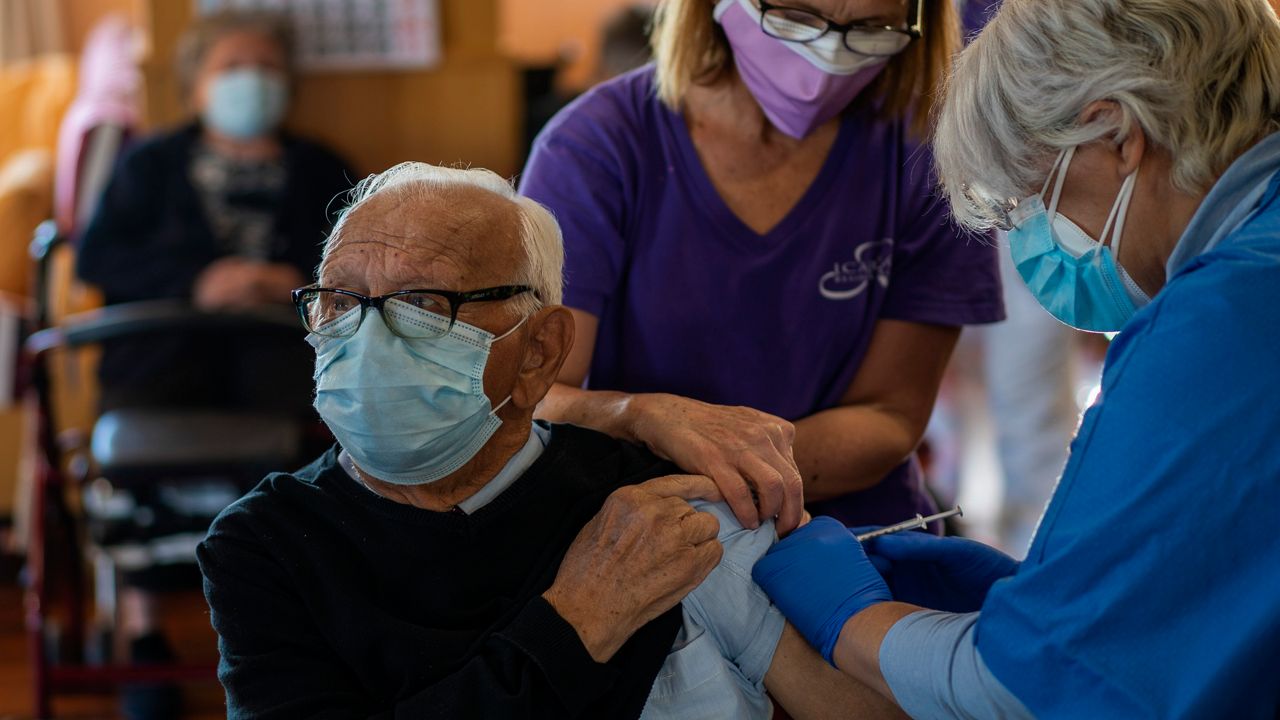LOUISVILLE, Ky. — Two weeks after Gov. Andy Beshear lamented the speed of COVID-19 vaccinations in Kentucky, the commonwealth has dramatically ramped up the number of shots going into arms. In the week between Jan. 8 and Jan. 15, nearly 83,000 doses, or 43% of the state’s total vaccinations, were administered. Now, the effort is poised to get a serious shot in the arm with the coming arrival of the Johnson & Johnson COVID-19 vaccine.
J&J could present final data for its stage 3 vaccine trial within weeks, Dr. Anthony Fauci said over the weekend. Next, will come an application for emergency use authorization, which the company expects to submit in February, followed by potential approval mid-month. The company confirmed this timeline in a statement to Spectrum News 1.
The imminent arrival of a third COVID-19 vaccine — so far, the Food and Drug Administration has only given emergency approval to Pfizer and Moderna — provides hope for an even more robust vaccination effort in the commonwealth, Beshear said Thursday. The vaccine will allow Kentucky to “supplement what we have and pick up our pace,” he said.
The J&J vaccine, the first in a second wave of pharmaceuticals to combat COVID-19, will also provide some distinct advantages over the two vaccines currently available. Unlike the vaccines from Pfizer and Moderna, J&J’s does not require ultra-cold refrigeration. Instead, it can be held at typical refrigerator temperatures.
This could make the vaccine easier to distribute in rural areas where local health departments may not have access to the proper freezers, which can cost between $10,000 and $15,000. It will also allow the vaccine to be distributed beyond the hospitals, pharmacies, and mass vaccine sites that are currently handling the bulk of the vaccinations.
“This could be popular, because it could be stored in doctors offices more easily,” former Food and Drug Administration Commissioner Dr. Scott Gottleib said on CNBC last week. “As you push vaccines out into the primary care setting and away from these mass distribution sites, this is going to be an attractive vaccine to use.”
Jessica Daley, vice president of strategic supplier engagement for the health care company Premier, said eliminating the requirement of ultra-cold freezers makes the J&J vaccine more “user-friendly.”
“The easier you make it, the fewer challenges you put in that process, the better it's going to be,” she said. “There are so many different places where the supply chain and the management of these vaccines can break down, that the easier you make the storage and handling, the fewer challenges you put in the way of people being successful.”
J&J’s is also expected to be administered in a single dose, rather than two. This could clear up some logistical headaches that have become clear in recent weeks as officials have struggled with whether to hold back the second dose of vaccine for a patient or hope that new supply arrives in time to complete the vaccination. It also reduces the need for people to return to a vaccination site for a booster shot. That has proven a struggle in places such as Florida, where there are more than 40,000 people who are overdue for their booster shot.
While the results of J&J’s phase 3 trials are still a couple weeks away, data published last week in The New England Journal of Medicine has experts optimistic. It showed that 90 percent of trial participants had developed antibodies 29 days out from vaccination. Fifty-seven days out from vaccination, the number was up to 100.
“Data is highly encouraging and supports the single inoculation approach that makes this vaccine unique,” Carlos del Rio, an Emory University epidemiologist, tweeted in response to the data.
An open question about the J&J vaccine includes how many doses will be available once it’s approved. Though the company is contracted to provide 12 million doses to the federal government by the end of February, Beshear mentioned last week that there are concerns about the pace of production.
Moncef Slaoui, the head of the government’s COVID-19 vaccine program, said last week that rather than the 12 million doses, he expects a “single-digit million number of doses available in the second half of February.”
"We're trying to make that number get as close to a double-digit number as possible and then a larger number in March and a much larger number in April,” he added.
In a statement, a spokesperson for J&J said, “Since early 2020, as we’ve developed our COVID-19 vaccine candidate, we have scaled up manufacturing in parallel and are confident in meeting our 2021 supply commitments, including those signed with governments.”



